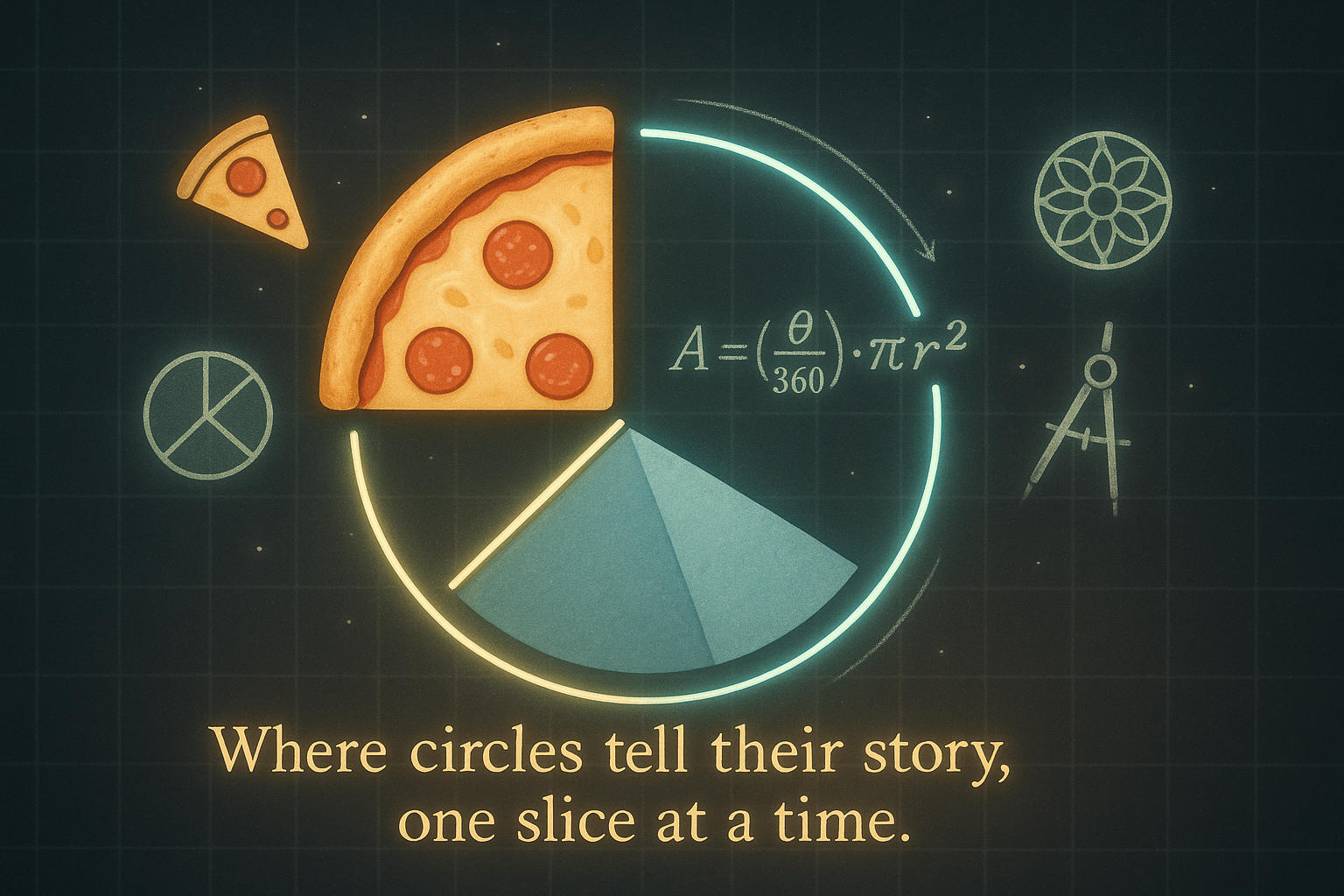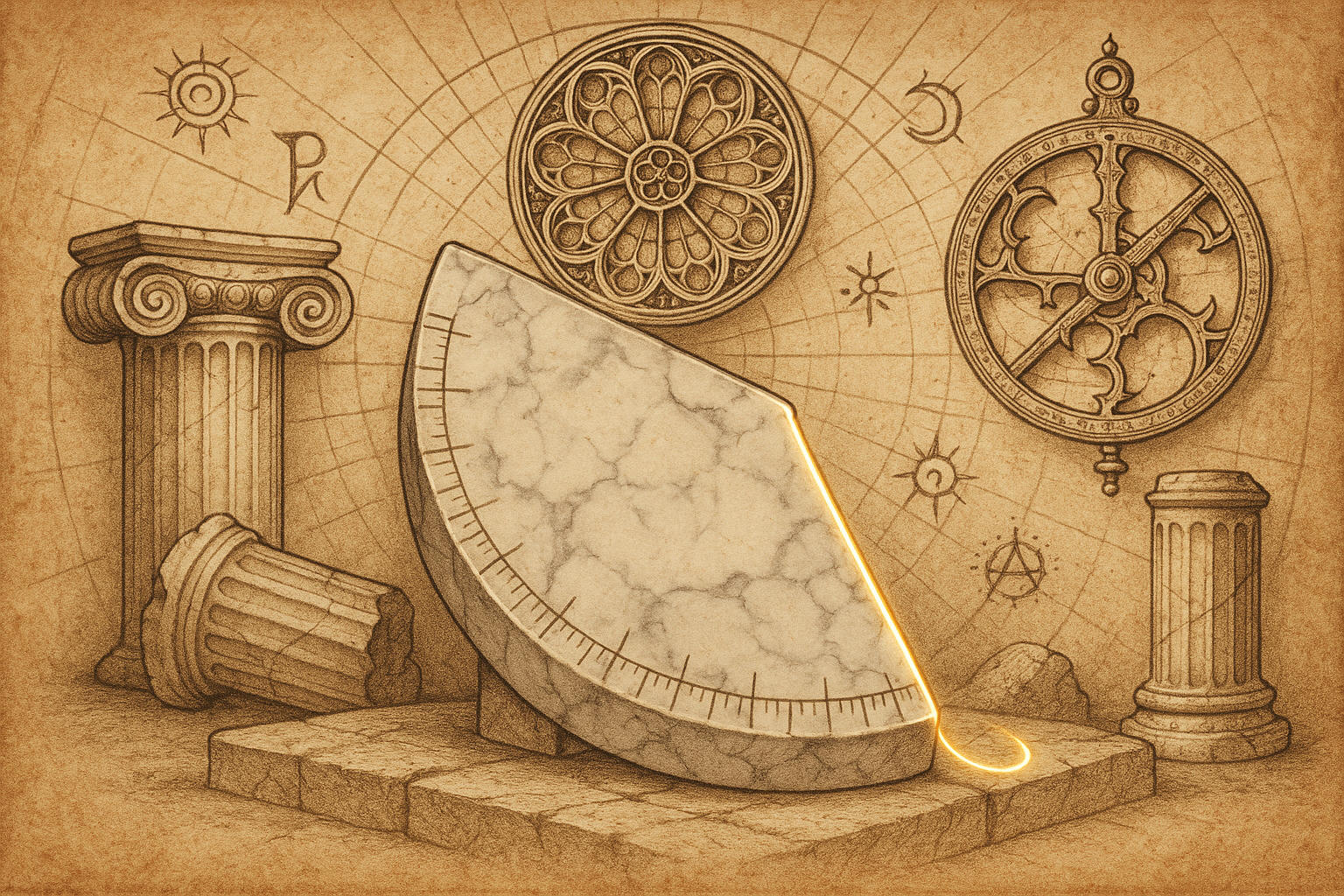A sector is like a slice of a pizza or a piece of pie — a part of a circle enclosed by two radii and an arc. While calculating the area of a sector might seem daunting at first, it’s quite logical once broken down. In this guide, we’ll define what a sector is, explain how to calculate its area, and show why it’s a valuable concept. We’ll also explore real-world applications, such as measuring park layouts or interpreting circular architecture. By the end, you'll not only know the formula but also appreciate the sector's role in everyday design and geometry.
Want to learn more about other shapes? Try our full collection of Area Calculators.
A Shape with Ancient Roots
If you’ve ever sliced a pizza or cut a piece of pie, you already understand the basic idea of a sector — even if you didn’t know its name.
In geometry, a sector is a portion of a circle, formed by two straight lines (called radii) extending from the center to the edge and the curved arc that connects them¹. It's like taking a wedge-shaped piece out of a full circle, with the curved part along the outer edge and the two straight sides meeting at the center.
Sectors come in two types:
-
A minor sector is the smaller part of the circle — think of a slim slice of pizza.
-
A major sector is the larger portion, like when someone "generously" cuts themselves almost half the pie.
Sectors appear in more places than you might expect — from the hands that sweep across a clock face to the thoughtful design of parks and stadiums. Seeing a sector isn’t just about recognizing its shape; it’s about appreciating how its smaller parts come together to create something functional and beautifully finished. So understanding sectors is important for practical applications.
Try out Semicircle Area Calculator

Formula and How to Use it
At first, calculating a sector’s area may seem complex — you're not working with standard shapes like rectangles or squares. But once you understand the method, it becomes remarkably simple.
A sector’s area depends on two key elements: the radius and the angle at the center. Depending on whether the angle is in degrees or radians, the formula changes slightly:
-
If the angle is in degrees:
Sector Area = θ/360 x 𝝿 x r^2
-
If the angle is in radians:
Sector Area = ½ x r^2 x θ
Where:
-
ris the radius of the circle, -
θis the angle at the center, -
πis the mathematical constant approximately equal to3.14
Step-by-Step Instructions:
-
Measure the radius (r)
Get an accurate measurement from the center to the outer edge. Even small errors can affect your result. -
Find the angle (θ)
The angle can be provided (e.g., 90°) or determined using arc length and radius. -
Select the appropriate formula
Use the degree-based or radian-based formula as needed. -
Insert the values
Plug your radius and angle into the equation. -
Include units
Express the area in square units—like m², ft², or cm²—matching your radius measurement.
While sectors may seem like a slice of complicated math, calculating their area is really just about scaling down the full circle’s area to fit your segment. Once you know the formula, it becomes fast, useful, and easy to apply in real life—from construction layouts to landscaping designs.
Real-Life Examples of Sector Area Calculation
Let’s look at a few practical examples of how to calculate sector area in daily life:
Example 1: Pizza Slice
-
Radius: 6 inches
-
Angle: 60°
-
Area
≈ (60/360) × π × 6² = 18.85 in²
Example 2: Water Sprinkler Coverage
-
Radius: 15 feet
-
Angle: 90°
-
Area
≈ (90/360) × π × 15² = 176.71 ft²
Example 3: Mechanical Engineering
-
Radius: 8 cm
-
Angle: 45°
-
Area
≈ (45/360) × π × 8² = 25.13 cm²
These examples show how useful it is to have a tool that lets you plug in numbers and get accurate results without manual calculation.
Try out Trapezoid Area Calculator
Sector Area Calculator & Manual Calculation
Manually finding the area of a sector is a great way to deepen your geometry knowledge. It helps you get comfortable with angles, radii, and fractions of circles—skills that are essential for both students and professionals. However, this approach can be slow and vulnerable to minor errors, particularly when the numbers get complex.
That’s where the Sector Area Calculator comes in. It speeds up the process, reduces miscalculations, and ensures precision every time. It’s a must-have for engineers, architects, and anyone needing accurate results for real-world applications. Both manual and digital methods have their strengths—the trick is knowing which one suits your task best.
Fascinating Facts About Sectors
Sectors might look simple at first glance, but they’ve had a major impact throughout history and culture. Take the Millau Viaduct in France, for example. It’s one of the tallest bridges in the world, and its sweeping curved design resembles enormous sectors—beautiful and structurally sound.
Back in the Middle Ages, builders used sector geometry to craft the incredible rose windows found in Gothic cathedrals. These intricate designs combined faith, symmetry, and math, creating artwork that still stuns visitors today.
Even in modern storytelling, sectors make an appearance. In The Hunger Games, the Capitol’s arena is arranged like a massive circle, sliced into different sectors—each with its own unique environment and challenge. This layout added drama, suspense, and visual symmetry to the story.
From bridges to cathedrals to cinema, sectors have quietly shaped how we design, build, and imagine the world around us.
Check out Math section to solve math quickly and easily


